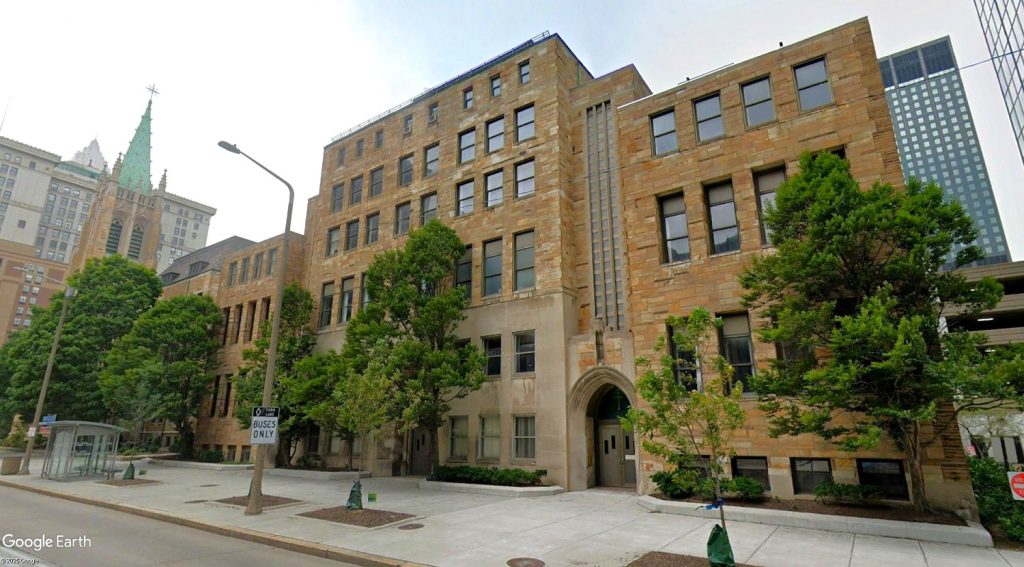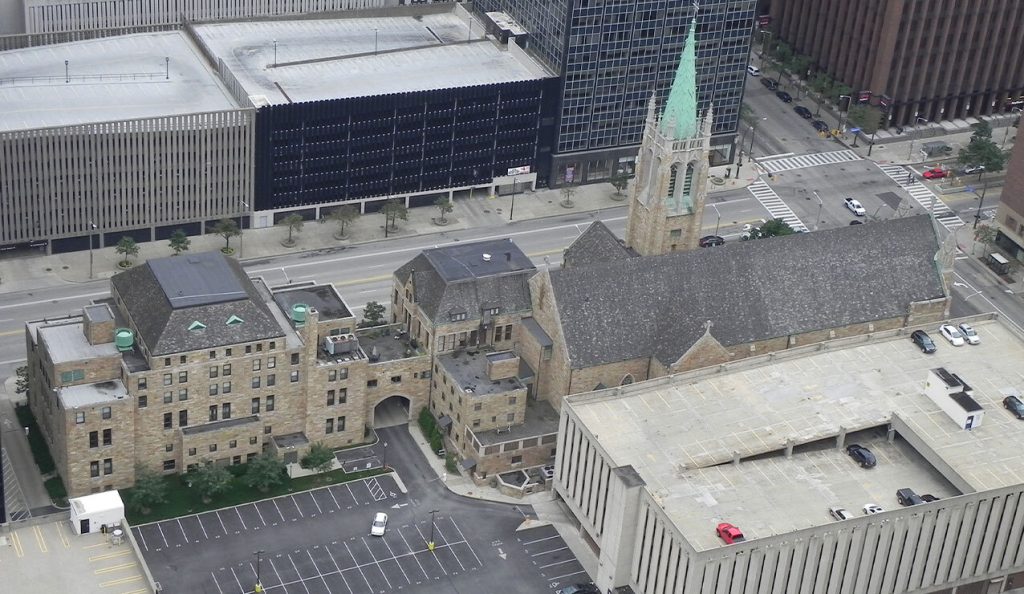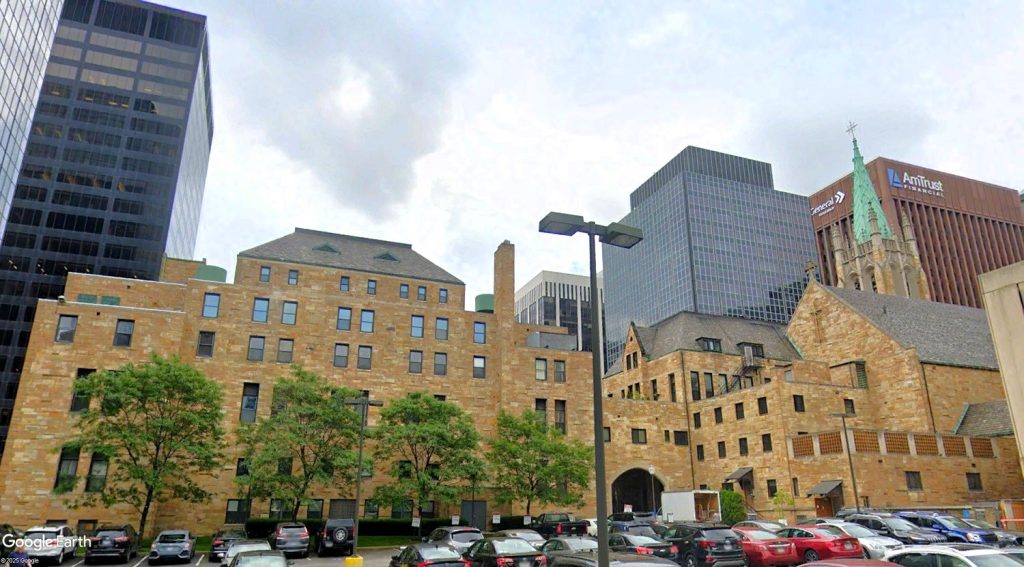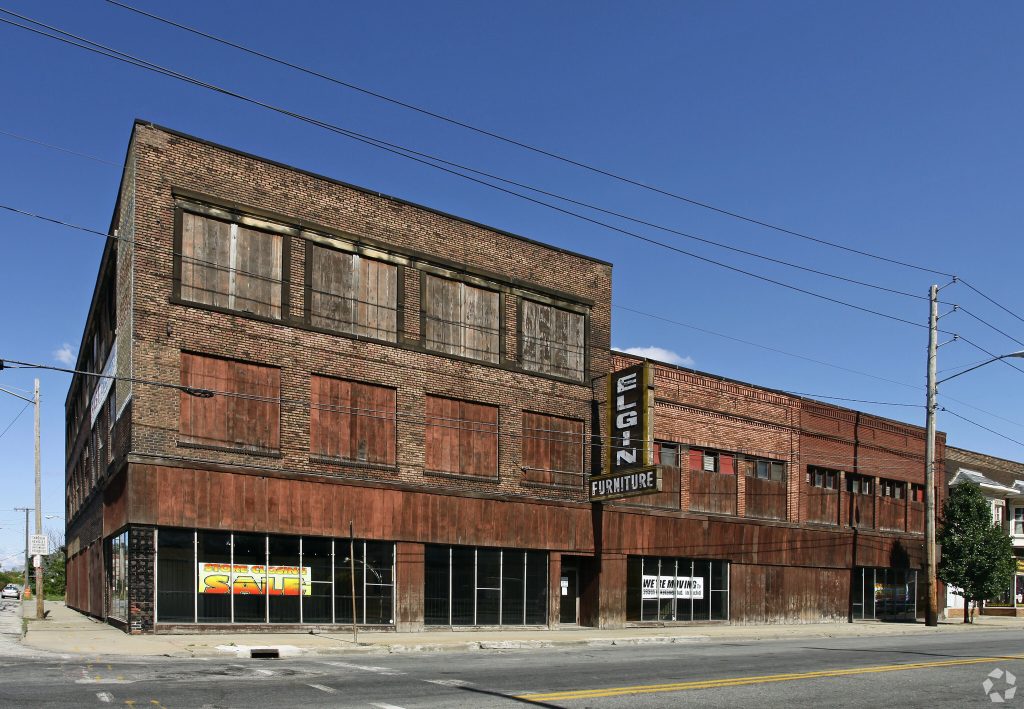Catholic Diocese, Charities’ offices to relocate
One of Downtown Cleveland’s oldest surviving buildings is about to see a structural renewal that also offer a more uplifting place for hundreds of people to work and visit. The Chancery Building, 1027 Superior Ave., was built in 1888 as a school but later was converted to offices. That use will be confirmed by a $15 million renovation.
Located next to the Cathedral of St. John the Evangelist, the Chancery is on the National Register of Historic Places and is a landmark building in downtown Cleveland. The revitalization is in accord with the key elements of Bishop Edward Malesic’s pastoral letter that was released earlier this year.
“I am thrilled that, with the help of the faithful, we will breathe new life into this iconic but underutilized office structure adjoining our cathedral in the heart of downtown,” said Malesic in a written statement.
“Evangelization and service are key aspects of what I am asking all Catholics to embrace in our diocese,” he added. “The physical renewal of this landmark building will help us bring people together and serve others’ needs in a way that is more fruitful and efficient.”
Uniting in this building will be the administrative offices of the Catholic Diocese, currently located across the street from St. John Cathedral in the Cathedral Square Plaza Building, 1404 E. 9th St.
Joining them will be the Catholic Charities’ offices, now located at St. Augustine Health Campus, 7801 Detroit Ave., in Cleveland’s Detroit-Shoreway neighborhood. The Chancery will house the cathedral’s offices, as well.
Renovations to the stone-façade Chancery Building are due to be completed in the Fall 2026. The last time the six-story, 27,500-square-foot building was significantly renovated in 1948, according to Cuyahoga County property records The neighboring cathedral, rectory, chancery, St. Johns College and St. Johns dormitory also were renovated and expanded in 1848.
In addition to the offices of Catholic Charities and the cathedral, the renovation will include a gathering place that will accommodate 150 people. This space will be shared between the diocese and Catholic Charities, and it will be used to engage, educate and evangelize the Catholic community, bringing people to Downtown Cleveland.
“Catholic Charities is a vital resource to our eight-county diocese,” said Jim Mullen, president and CEO of Catholic Charities. “The relocation of our administrative team to the historic Chancery Building will allow us to deepen our partnership with the Diocese of Cleveland, and at the same time, expand our reach and services to our most vulnerable in the communities we serve.”
The original building on the Chancery’s site was constructed in 1857 as a school building for the cathedral. It was later demolished as part of the construction of a much larger school to accommodate 1,000 students in 1888.
After the building was vacated by the school, it eventually became the home of diocesan offices. The building has housed the archives of the diocese since the offices departed for Cathedral Square Plaza Building in the early 2000s.
“Having Catholic Charities’ administrative offices in the chancery is the next chapter of a building that has been so instrumental to the growth of our diocese,” Malesic said.
“Serving God’s people is a foundational teaching of Jesus as written in the Gospel of St. Matthew, Chapter 25. Catholic Charities does this work every day on behalf of people in need,” he added. “Having our administrative offices in close proximity will streamline operations and strengthen our ability to serve others.”
END






